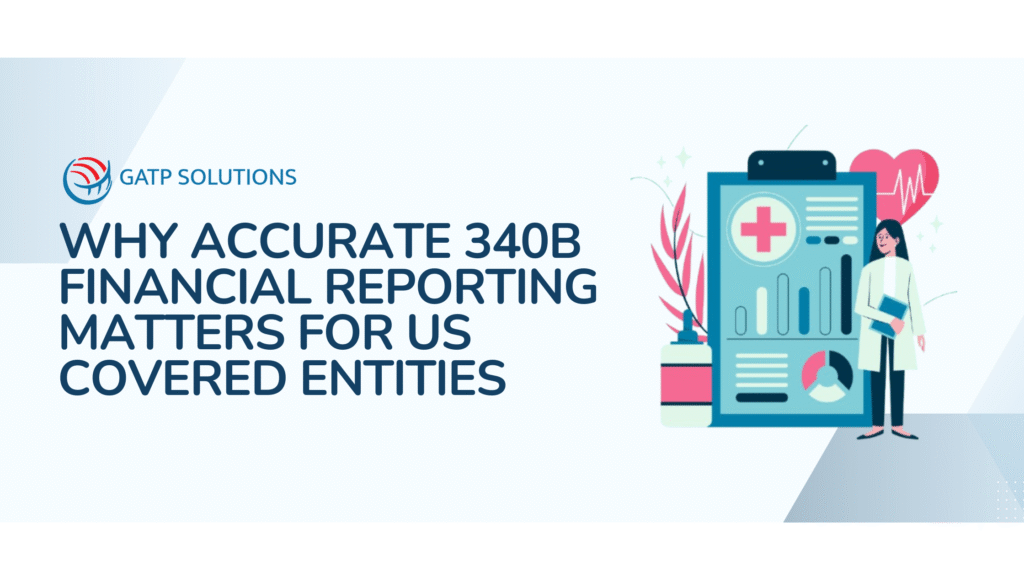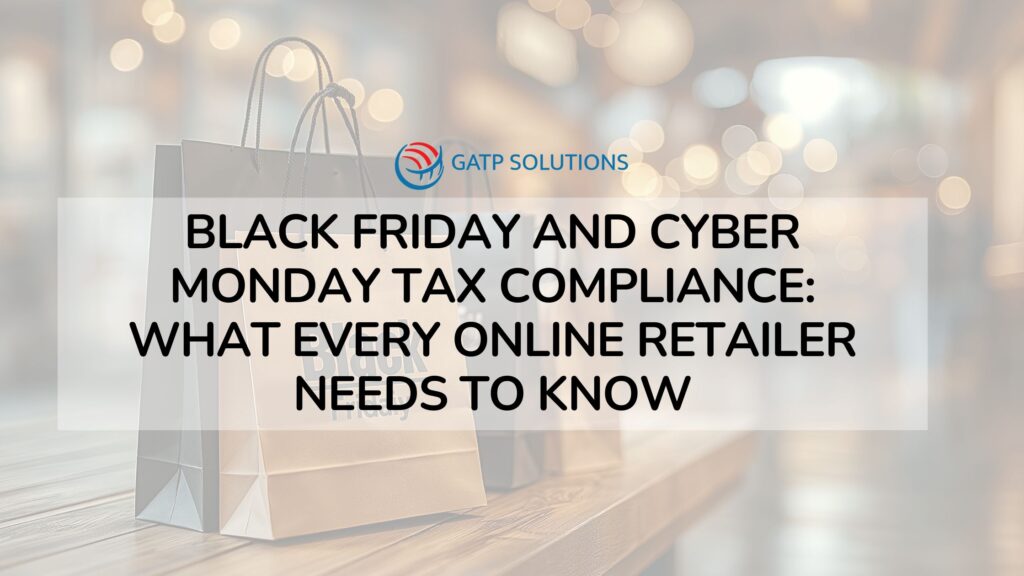The 340B financial reporting is more than just a regular activity for US hospitals, health centers, and other covered entities. The reporting creates the foundation for the program’s stability and compliance.
Did you know that in 2023 alone, the 340B drug pricing program accounted for $66.3 billion in discounted medications? As the financial stakes are so significant, it is important for your organization to be accurate with their financial reporting. The accuracy determines whether the entities will get the program benefits or penalties.
This blog will explore the financial impact of reporting errors, insights from HRSA audits, the cost of inaccurate data management, duplicate discount challenges, state-level requirements, and the technology solutions.
The Financial Stakes of 340B Reporting
According to reports, hospitals in Minnesota alone have generated at least $630 million in 340B related revenue, with one of the hospitals alone reported $129 million. Hence, it is crucial for covered entities in the US to ensure their financial reporting is accurate.
When there are errors in 340B reporting, you have a risk of repaying millions in discounts to manufacturers! Imagine what a loss it could be for you financially and reputation wise. Also, any repayment obligations at this level can threaten the financial stability of the entire system.
Hence, accuracy of reporting is not only about following rules but also protecting resources needed for the patients’ care.
HRSA Audits Expose Reporting Vulnerabilities
The HRSA conducts approximately 200 audits every year, with a major focus on hospitals. The 340B audits showcase the following vulnerabilities consistently:
- Incorrect OPAIS records
- Inaccurate or incomplete Medicaid Exclusion Files
- Duplicate discount violations
- Diversion of covered drugs
Now, each of these issues circle back to the entities’ financial documentation and reporting practices. For administrators and finance teams, the ability to demonstrate compliance with 340B program requirements depends on reliable, auditable financial records.
The Cost of Inaccurate Data Management
Data management is one of the most important factors of compliant 340B reporting. If the data is inaccurate, your organization can face severe financial and operational consequences. These errors not only increase costs but also put your compliance eligibility at risk. The following are the consequences of poor and inaccurate 340B data management:
- Poor reporting risks extend far beyond paperwork.
- Losing 340B eligibility forces covered entities to purchase drugs at Wholesale Acquisition Cost, which is often 21 to 32 percent higher than 340B prices.
- For organizations handling hundreds of thousands of prescriptions, this price increase quickly translates into millions in lost savings.
- Third-party administrators add risk factors, including manual entry errors, automation breakdowns, and data flow gaps.
- Without continuous monitoring, hospitals may not identify these problems until an audit exposes them.
To avoid these, GATP Solutions helps covered entities address these risks by ensuring accurate reporting systems and compliance practices that protect financial resources and strengthen program participation.
Duplicate Discounts and Compliance Controls
Duplicate discounts occur when manufacturers are forced to provide both a 340B discount and a Medicaid rebate for the same prescription. These violations are costly and undermine the program’s credibility.
Some states, including Maine, New Hampshire, and South Dakota, have responded with complete prohibitions on dispensing 340B drugs to Medicaid enrollees. While this removes duplication risk for you, it also reduces patient access. For most covered entities, rigorous financial controls are the only viable way to prevent duplicate discounts while maintaining program participation.
State-Level Reporting Requirements
State-level oversight of the 340B program has grown in recent years. New laws passed in 2025 have expanded what hospitals and clinics need to disclose. These requirements increase transparency but also create much heavier reporting work for covered entities. The following are some of the reporting requirements you should be updated with:
- In 2025, Colorado, Idaho, Indiana, Ohio, Rhode Island, and Vermont each introduced new 340B reporting rules.
- These laws require details such as spending on 340B drugs, reimbursements received, use of program savings, and payments to contract pharmacies.
- Ohio’s rules, effective in July 2026, go further by requiring itemized reports linking operating costs to specific uses of 340B savings.
At GATP Solutions, we make it easier for our clients to be more compliant by staying updated with the latest rules and regulations to avoid any unnecessary troubles and ensure accurate financial reporting.
Technology Solutions for Accuracy
Technology plays a growing role in reducing reporting risk. Advanced compliance systems now provide:
- Daily OPAIS synchronization to prevent mismatched records
- Automated transaction auditing with documentation
- Integration with Electronic Health Records for precise NDC capture
- Version control and historical snapshots for verification
By implementing these tools, hospitals and clinics in the US strengthen their ability to meet 340B program requirements while reducing audit exposure.
The Compliance-Revenue Connection
Accurate reporting does more than just avoid penalties for organizations. It also protects the valuable revenue. According to reports, many organizations find that even when they capture 85 percent of eligible claims, they still miss out on significant savings. Regular reviews and monthly data checks make it easier to spot gaps and make sure all eligible claims are included.
When reporting is handled properly, covered entities can put those savings back into their mission. This might mean opening new clinics, expanding medication assistance programs, or adding patient services.
Preparing for Financial Scrutiny
HRSA auditors, often pharmacists with specialized knowledge, expect covered entities to provide detailed documentation. This includes purchasing records, contract pharmacy agreements, and Medicaid billing files.
Entities that cannot produce accurate financial documentation not only risk repayment but also create issues in the overall system of the 340B program, questioning its integrity. Reliable reporting protects both individual hospitals and the long-term future of the 340B program itself.
Strategic Importance for the Healthcare Mission
For safety-net providers, the 340B program is more than just a financial tool. Clear and accurate reporting allows savings to be redirected into practical initiatives like specialty clinics, subsidized care, and lower-cost prescriptions for patients.
How GATP Solutions Supports Covered Entities
GATP Solutions works closely with hospitals and health centers to make financial reporting simpler and more reliable. Our goal is to help organizations meet compliance standards while keeping their focus on patient care.
- Support with accurate financial documentation
- Guidance for audit readiness and reporting practices
- Assistance with integrating financial systems for smoother operations
- Ongoing compliance monitoring and advice
By combining these services, GATP Solutions helps covered entities protect their savings and reinvest them with confidence. If your organization is looking for dependable support in meeting 340B program requirements, our team is here to provide tailored guidance.
Key Takeaways
- Accurate 340B financial reporting is essential for financial stability, compliance, and patient care in the US healthcare system.
- With billions of dollars involved, even small errors can create major financial and operational risks.
- HRSA audits and new state-level reporting rules make accurate reporting more important than ever.
- Covered entities that prioritize strong reporting practices can better protect savings and reinvest in patient care.
- Partnering with trusted advisors like GATP Solutions helps organizations manage risk and sustain their mission effectively.
Frequently Asked Questions
- What is 340B financial reporting and why is it important for US hospitals?
340B financial reporting is the process of tracking and documenting savings from the 340B Drug Pricing Program. For US hospitals, it ensures compliance, protects revenue, and demonstrates that program benefits are being used to support patient care.
- How does accurate reporting support 340B compliance for covered entities?
Accurate reporting shows that covered entities follow all 340B program requirements. It reduces the risk of audit findings, repayment demands, and eligibility loss while reinforcing trust in the program. Partnering with experts like GATP Solutions can help ensure records meet compliance standards.
- What are the main 340B program requirements for US covered entities?
Entities must maintain auditable records, prevent duplicate discounts, and comply with Medicaid Exclusion File rules. They must also ensure purchases, billing, and contract pharmacy agreements align with compliance standards. GATP Solutions assists organizations in aligning financial reporting with these requirements.
- How often does HRSA conduct 340B audits of hospitals and health centers?
HRSA performs about 200 audits annually, with most focused on hospitals. These 340B audits check for record accuracy, compliance with program requirements, and prevention of duplicate discounts.
- What happens if a covered entity fails a 340B audit?
If a failure occurs, the entity may have to repay manufacturers for improperly obtained discounts. In severe cases, they risk losing 340B eligibility, which can mean buying drugs at significantly higher prices. Working with GATP Solutions helps organizations stay audit-ready and avoid these risks.
- How do state-level 340B reporting laws in states like Ohio, Colorado, and Indiana affect hospitals?
New state law updates in 2025 require reporting of acquisition costs, reimbursements, and how savings are used. Ohio’s rules, effective July 2026, go further by requiring detailed, public financial disclosures from covered entities.
- Why is data accuracy critical for 340B covered entities managing large prescription volumes?
Errors in large prescription datasets can quickly multiply into millions of dollars in lost savings or compliance risks. Accurate reporting prevents these losses and supports sustainable program participation.
- What are duplicate discounts in the 340B program and how can they be prevented?
Duplicate discounts occur when a manufacturer provides both a 340B discount and a Medicaid rebate for the same drug. Prevention requires strong financial controls, accurate reporting, and clear coordination with state Medicaid programs.
- How does accurate 340B financial reporting help hospitals reinvest in patient care?
When reporting is precise, hospitals can confidently direct 340B savings toward opening specialty clinics, providing discounted medications, and funding patient assistance programs. With the right guidance from GATP Solutions, these reinvestments can be made with confidence.
- How can GATP Solutions assist US covered entities with 340B compliance and audits?
GATP Solutions supports hospitals and clinics with accurate documentation, audit readiness, and reporting practices. By simplifying compliance, GATP helps covered entities protect their savings and reinvest in patient care.




